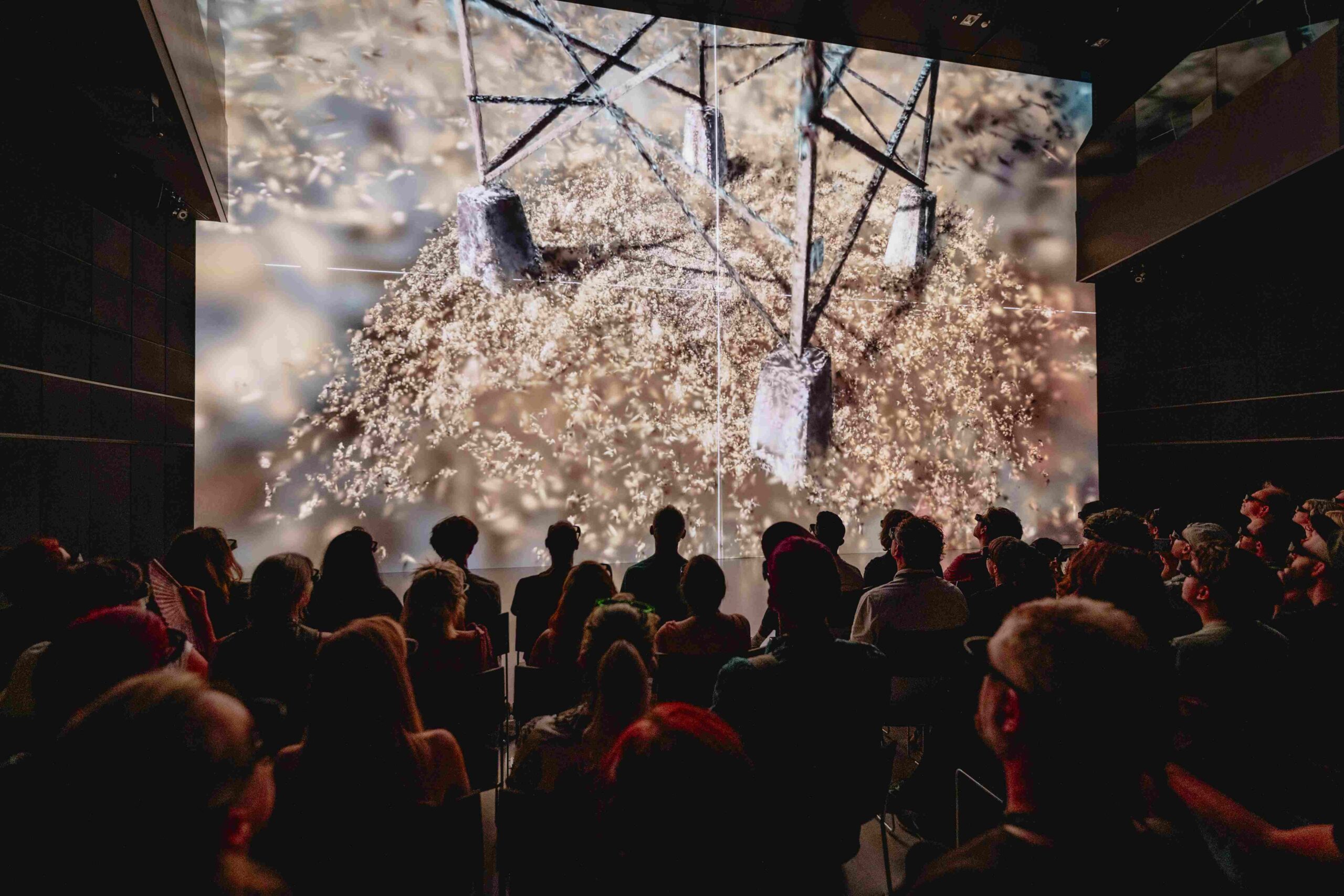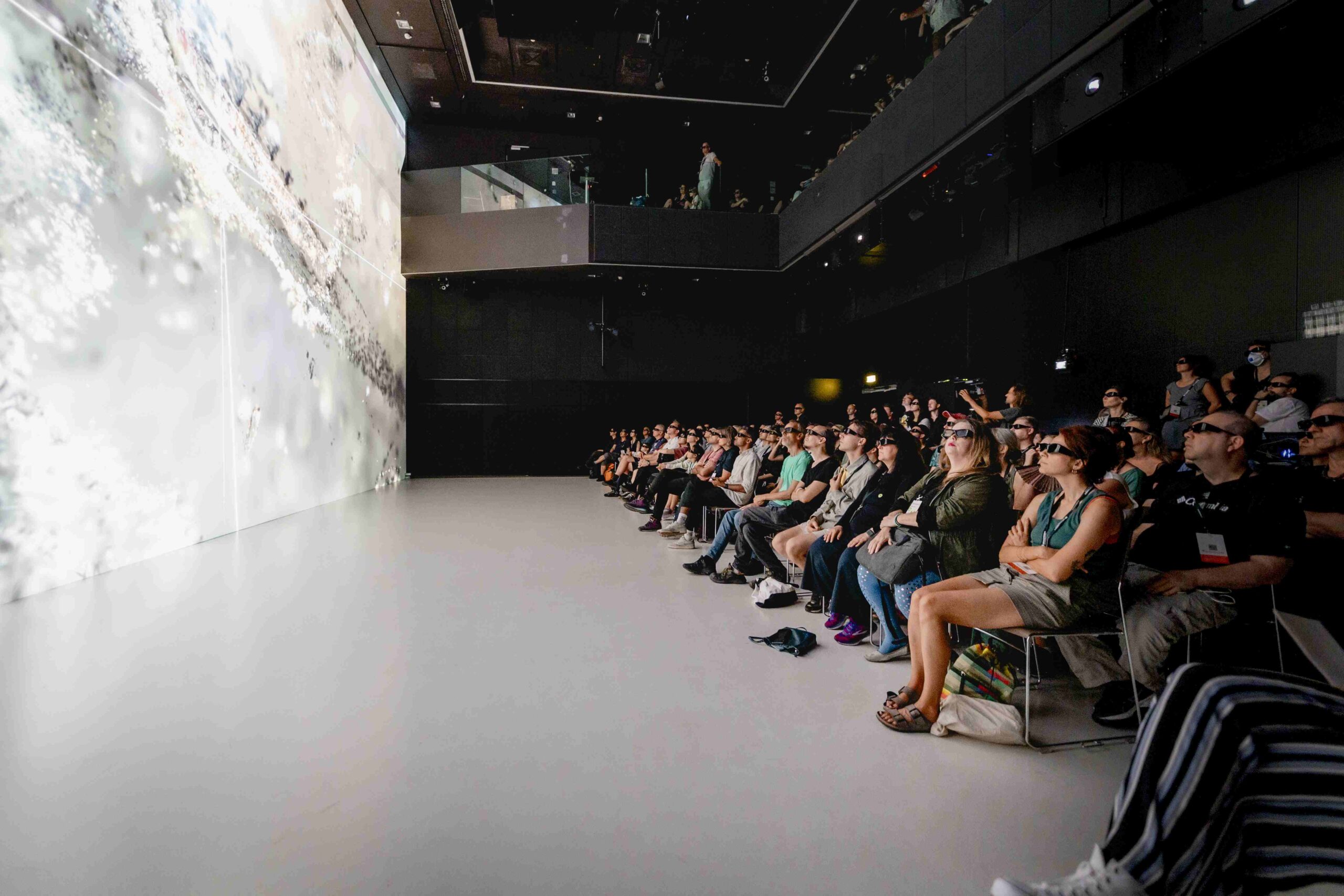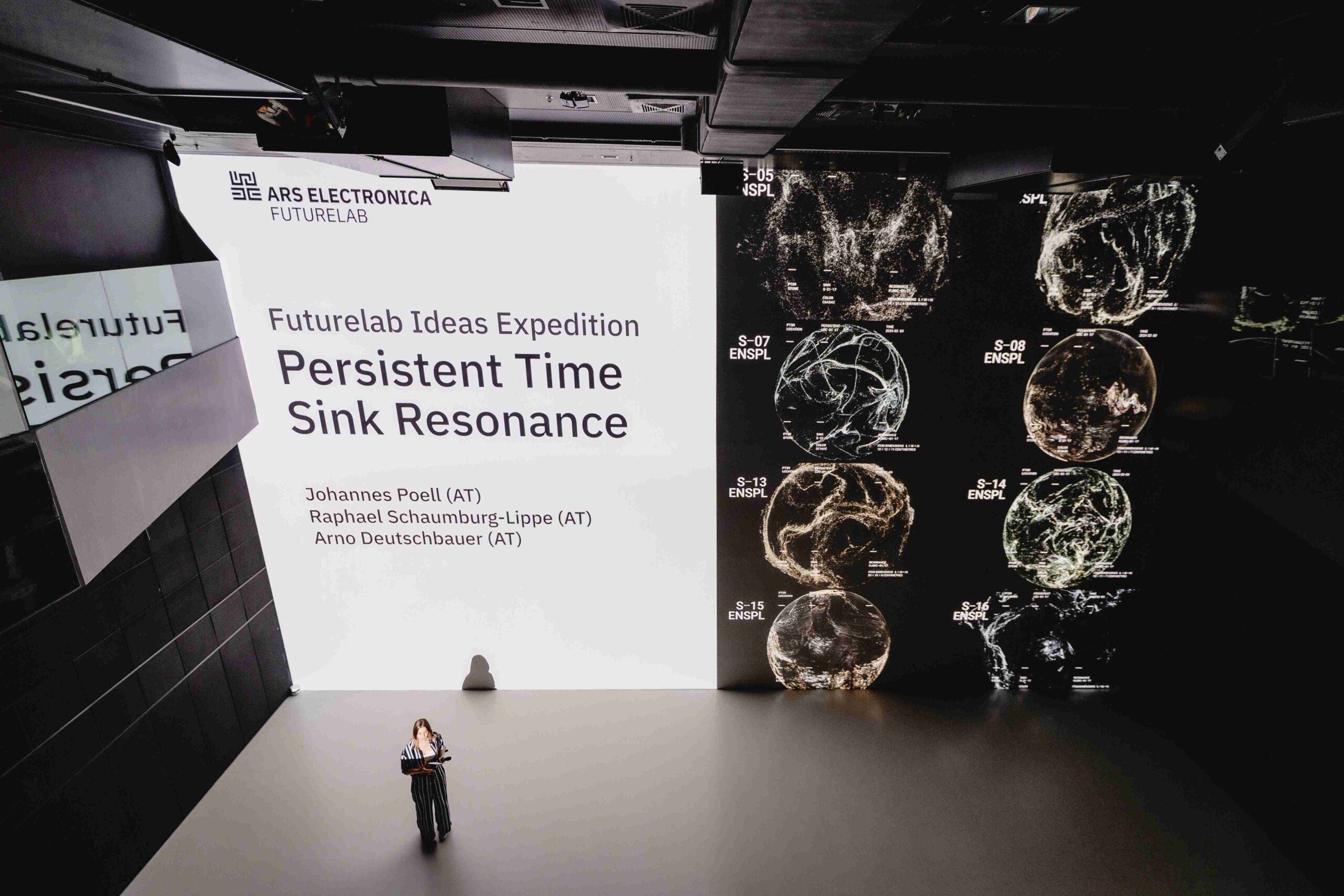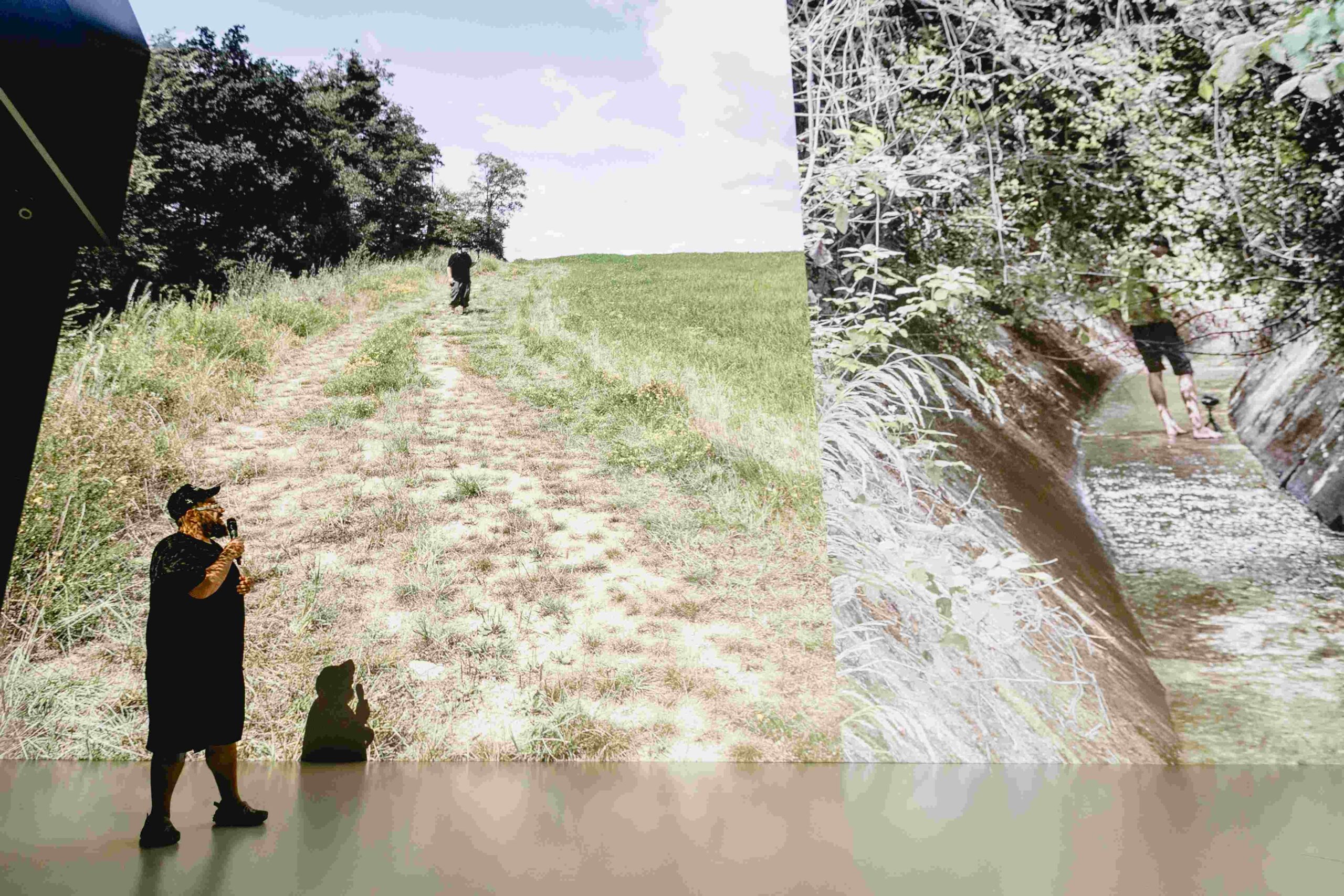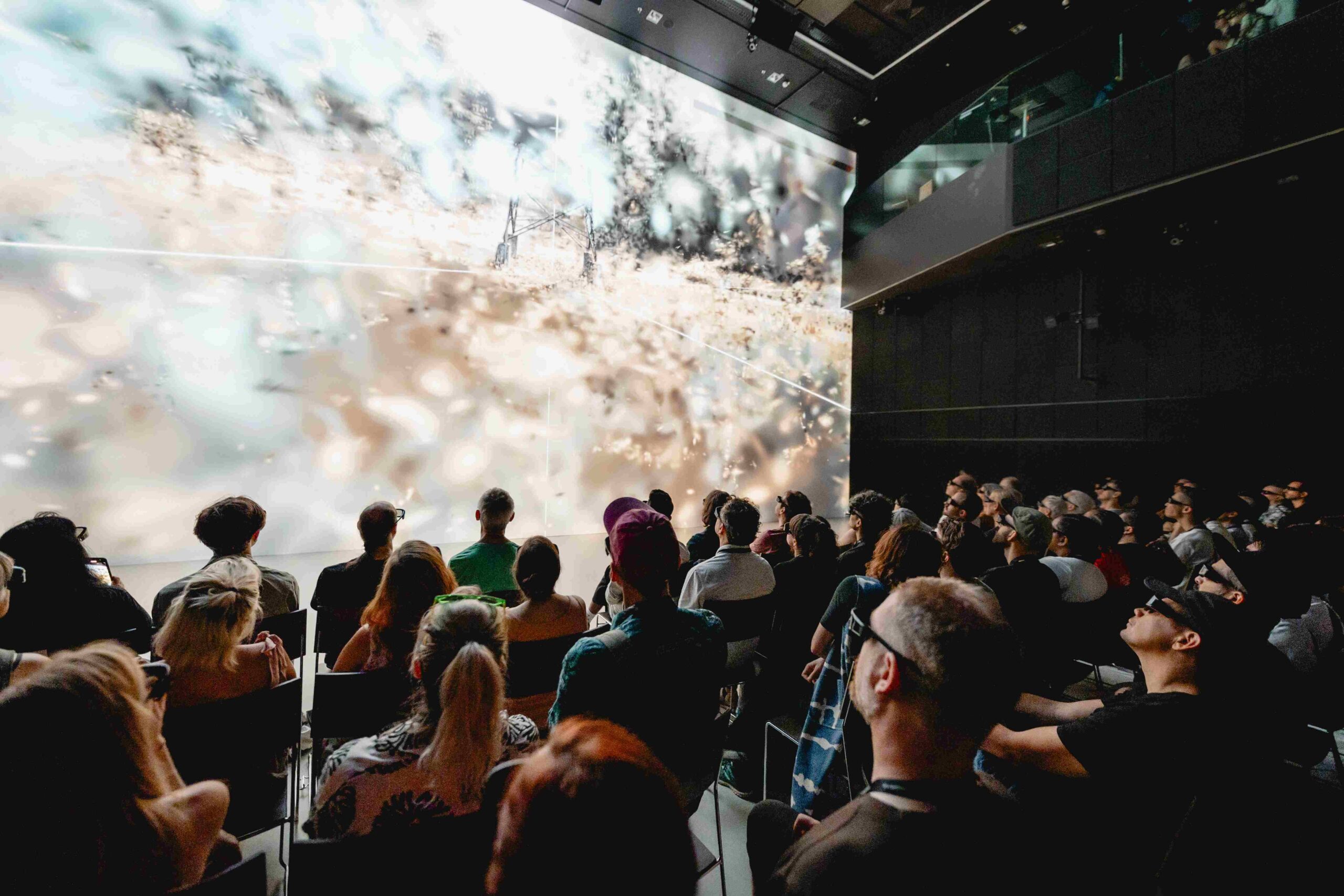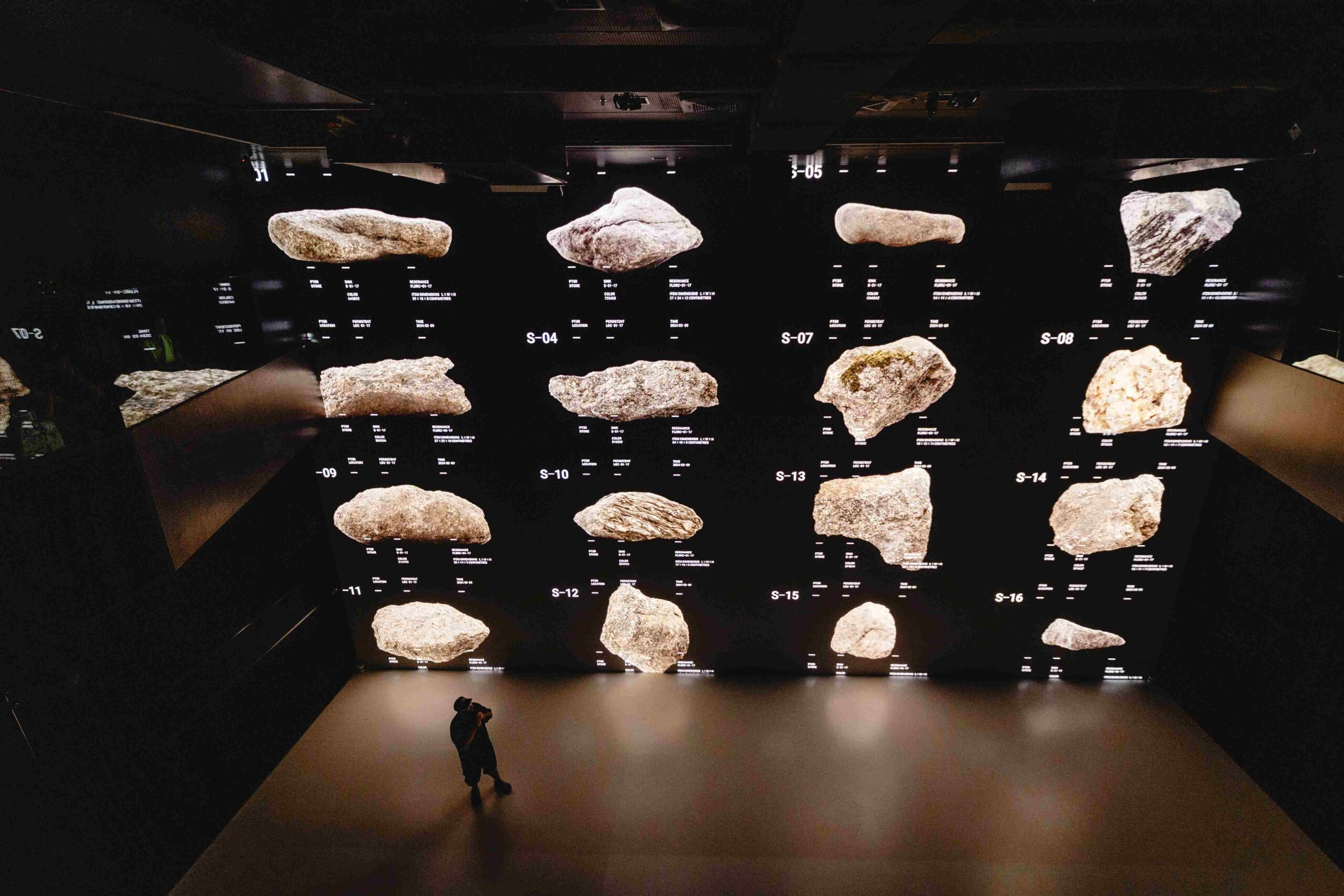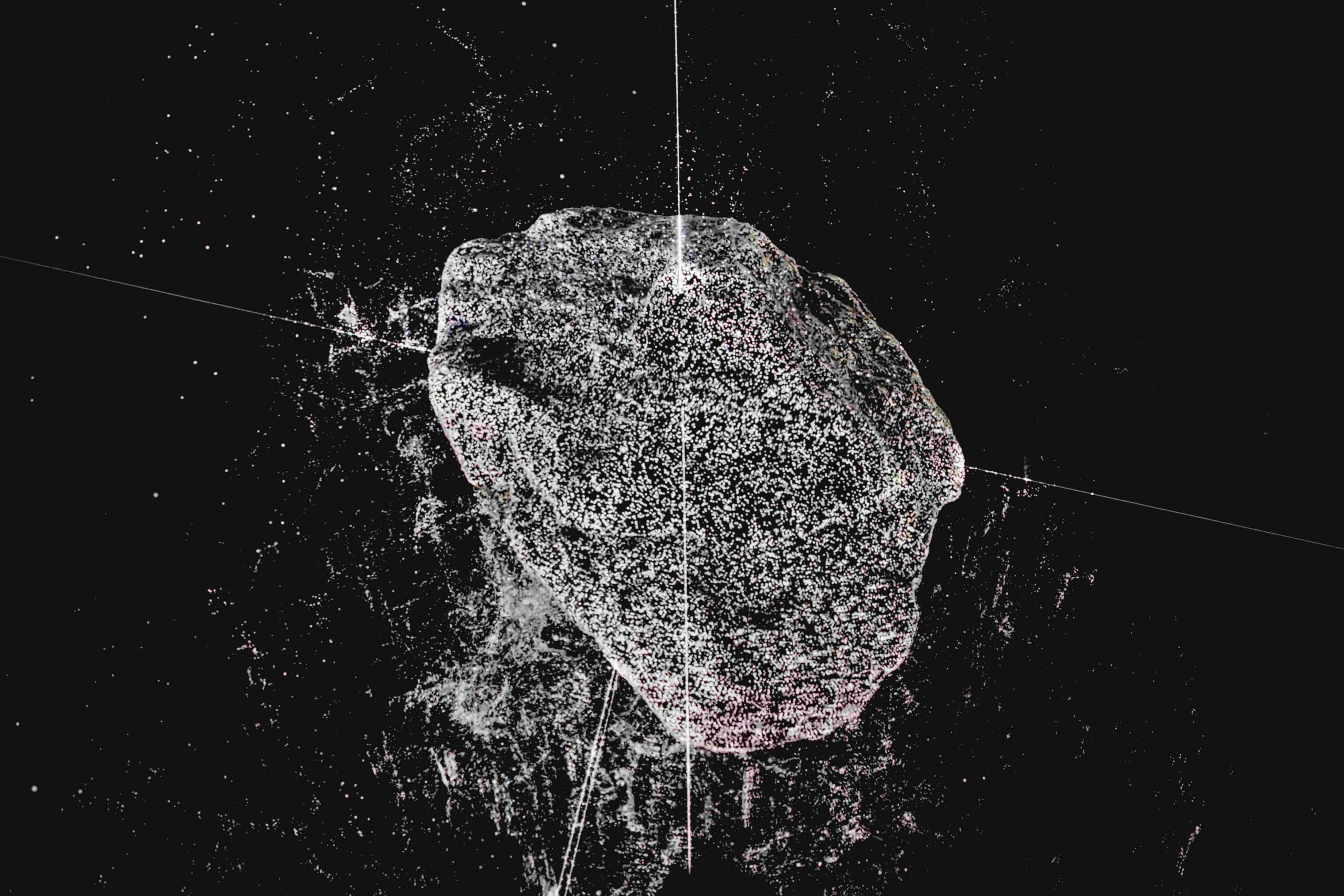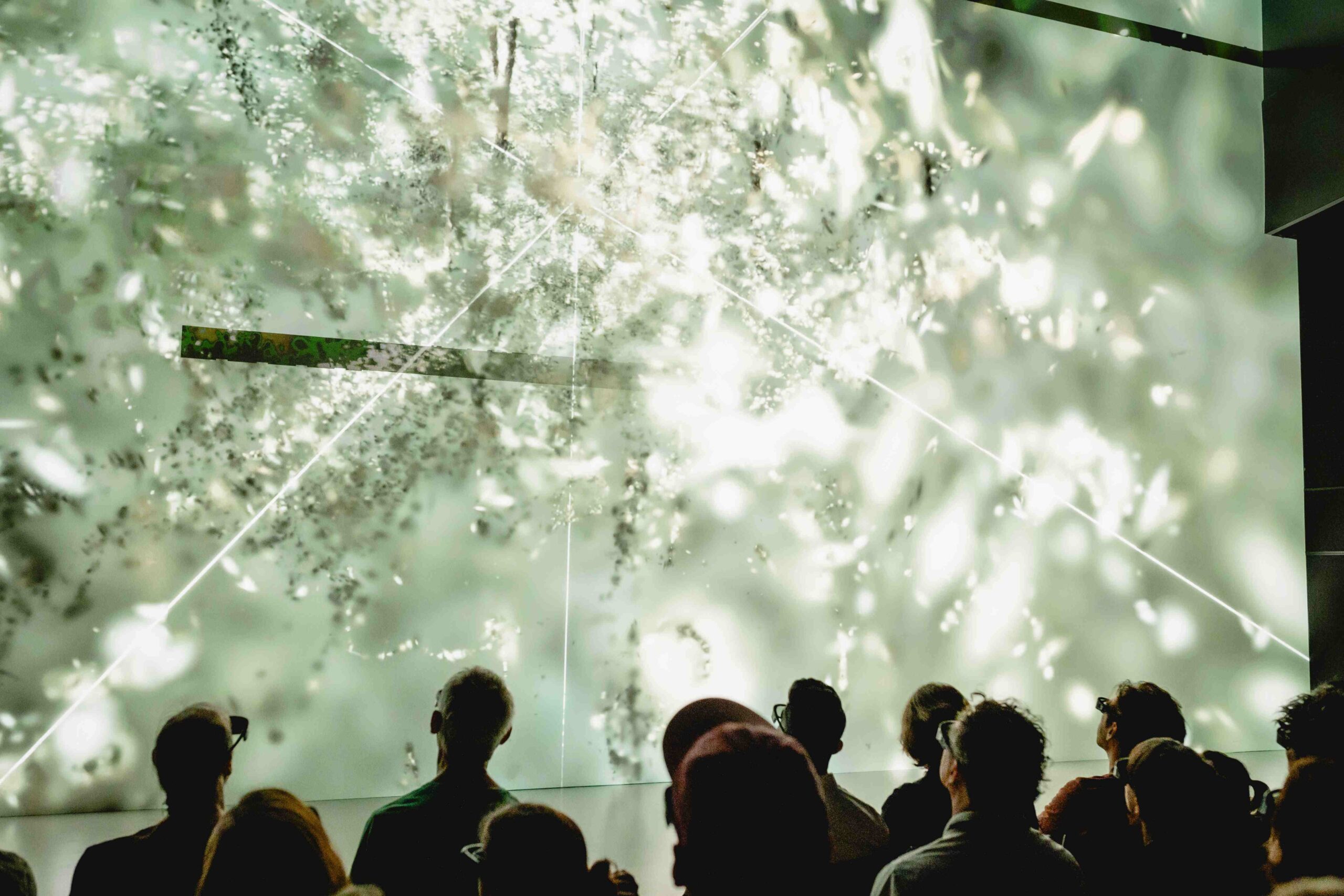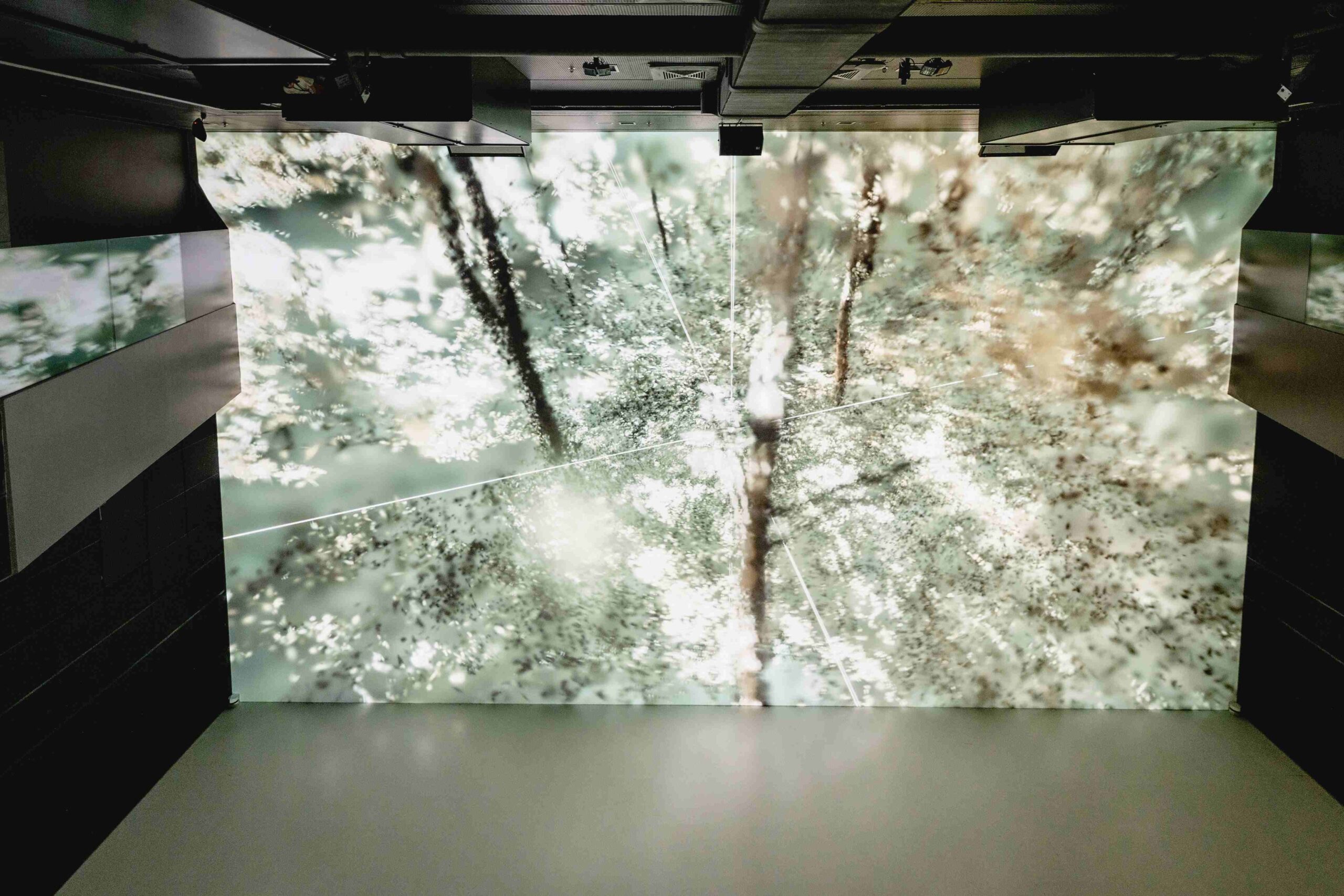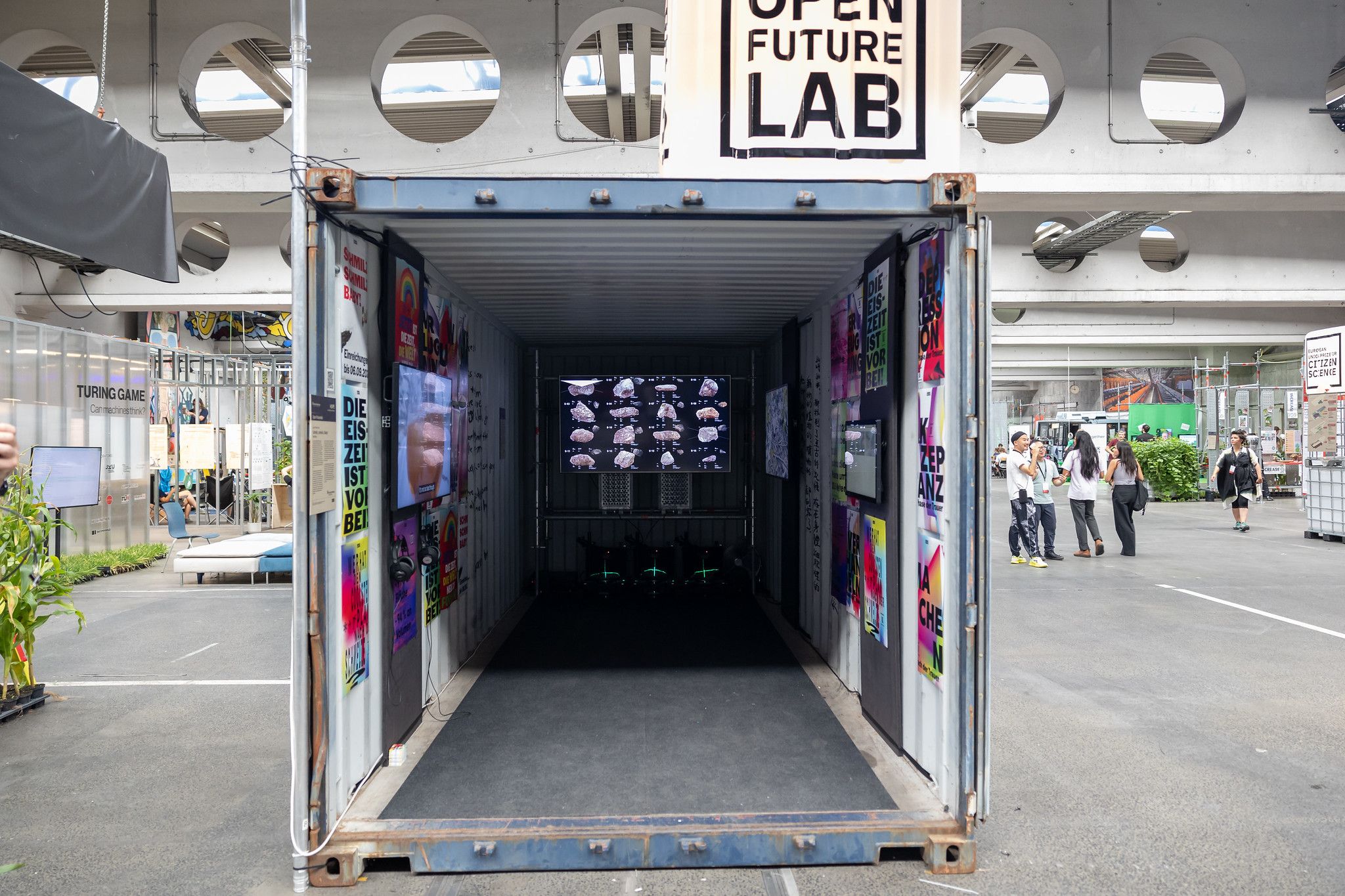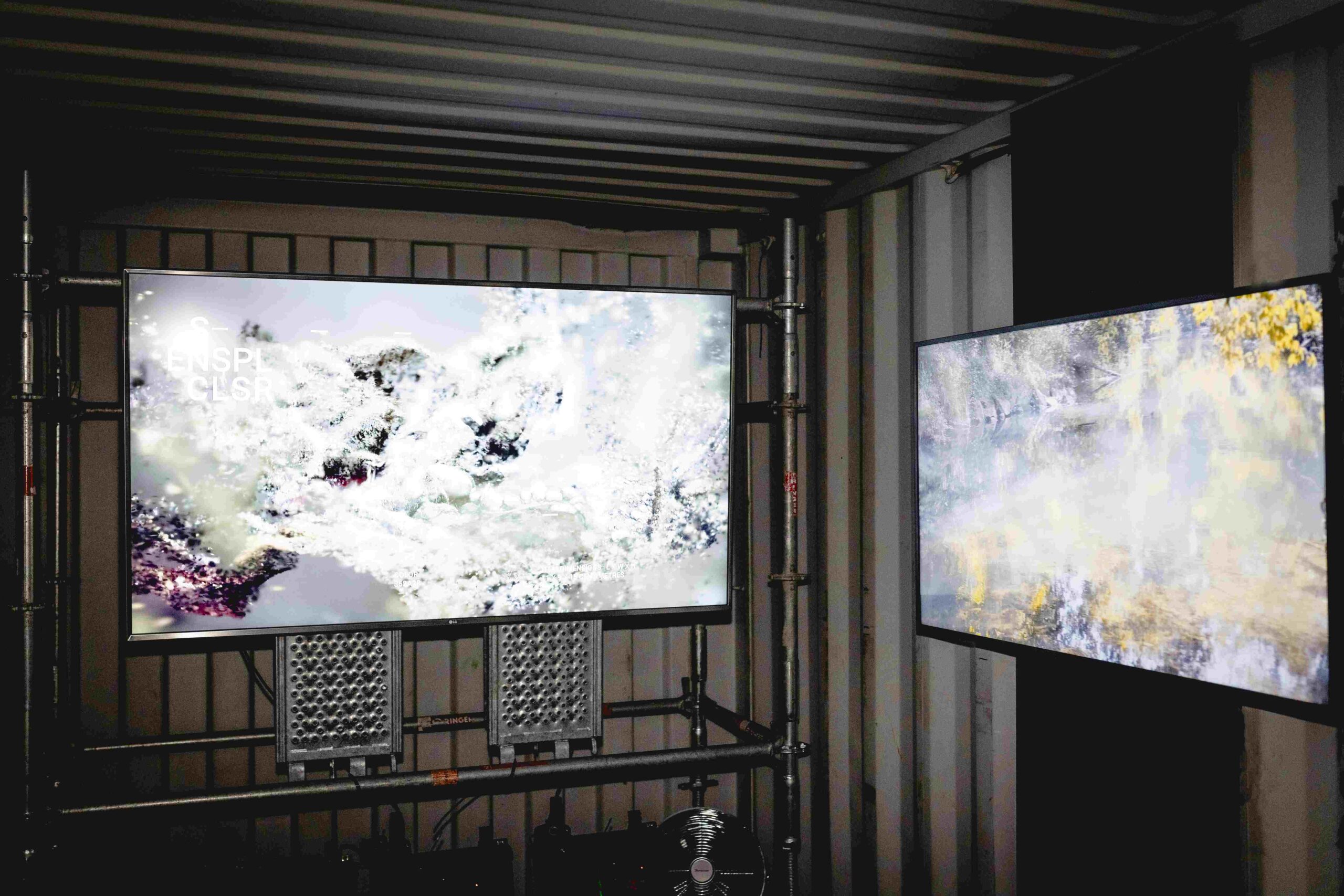Persistent Time Sink Resonance is an artistic exploration of reality volumes utilizing 3D Gaussian Splatting. This recent rasterization technique supports the digital, spatial reconstruction of real-life objects or even our surroundings in the computer.
Persistent Time Sink Resonance is one of the two winning projects of the Ars Electronica Futurelab’s internal ideas competition Ideas Expedition 2024. It is presented as an audio-visual archive of collected digital data and stones as symbolic physical representations.
The artefacts of Persistent Time Sink Resonance constitute memory anchors of scanned places in nature. Scanning refers here to the practice of capturing a location via photography and field recording. The artists produced thousands of images and hours of audio recordings as data sets for the machine to reconstruct and remember. These data sets were processed with photogrammetry and Gaussian Splatting to create holistic reality volumes of found stones in actual places in the surroundings of Linz / Upper Austria during March-July 2024.
Reality is a persistent time sink. A time sink can be described as something which continues to exist or occurs over a prolonged period, consuming vast amounts of time in the process. Resonance, in physics, is the selective response of an object or a system that vibrates in step or phase, with an externally applied oscillatory force. The artists are like that force, poking at reality trying to recollect and understand as they capture it as digital memories. Memory and remembering are processes happening in the human brain. To remember something can be seen as active reconstruction. This can be lossy or even create completely different memories in the human mind. The artists tried to simulate this reconstruction effect within visual and auditive machinic memory as their artwork.
Reality capture is the active process of scanning, for instance with a camera and then reconstructing that object or location in digital space. Here the reality volumes are created with Gaussian Splatting, as it allows for real-time rendering of photorealistic scenes learned from small samples of images. The reality volumes of Persistent Time Sink Resonance tend to shatter and break at the point of low or withheld information.
Gaussian Splatting is not only used for the direct visual transfer of spatial data. Rather, it is a matter of lingering in the gaping interstices that open up when capturing reality with this rendering technique. Representation tends to get fuzzy like memories, as objects split open, and colors are scattered like digital glass shards in 3D space. It is here where we linger, as digital reality bursts apart. This is where machinic expressiveness is revealed in spatial aesthetics.
This project was part of the Open Futurelab at the Ars Electronica Festival 2024.
Credits
Ars Electronica Futurelab: Johannes Pöll, Raphael Schaumburg-Lippe, Arno Deutschbauer
Persistent Time Sink Resonance is a winner project of the Ars Electronica Futurelab Ideas Expedition 2024
